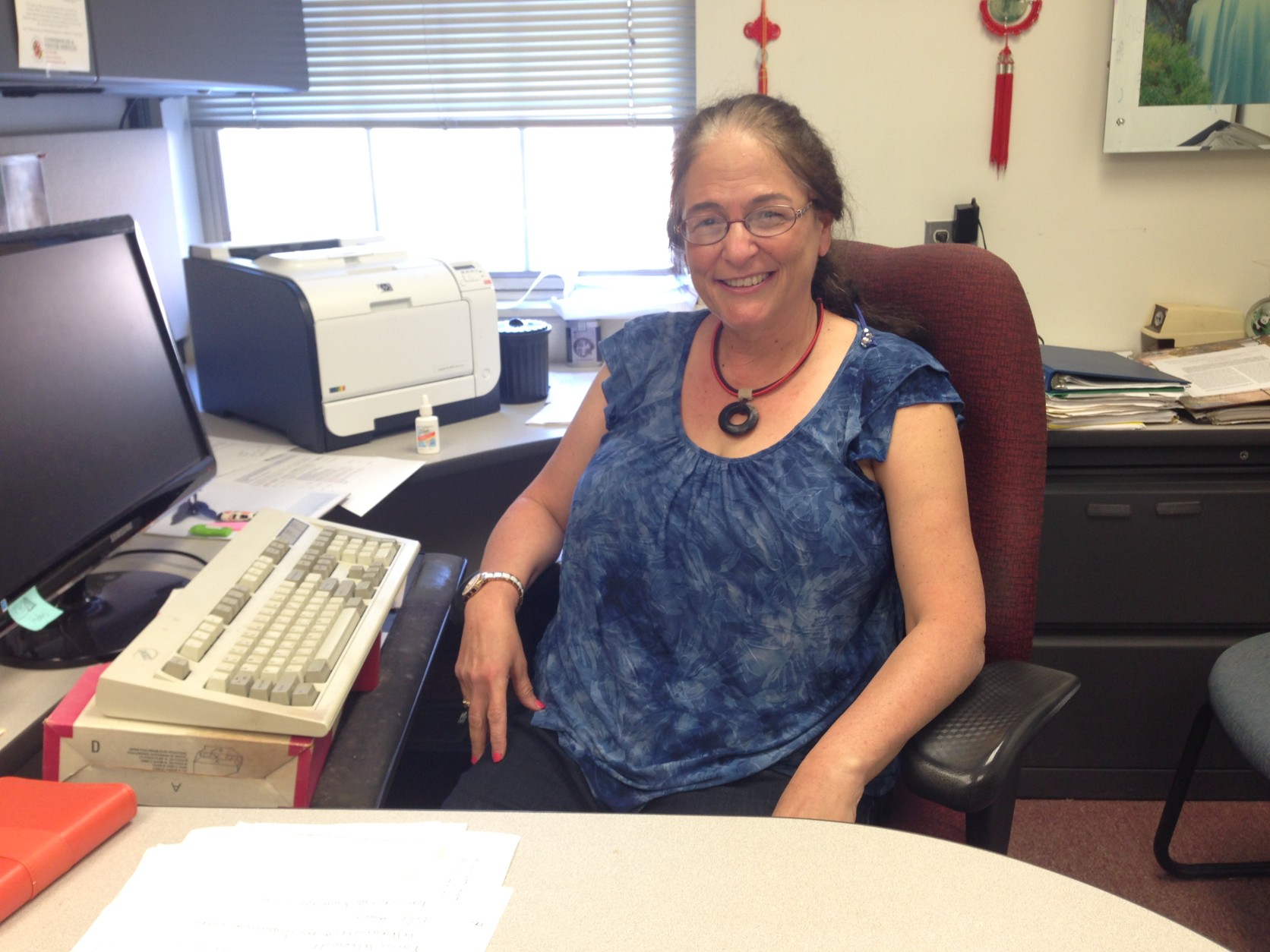
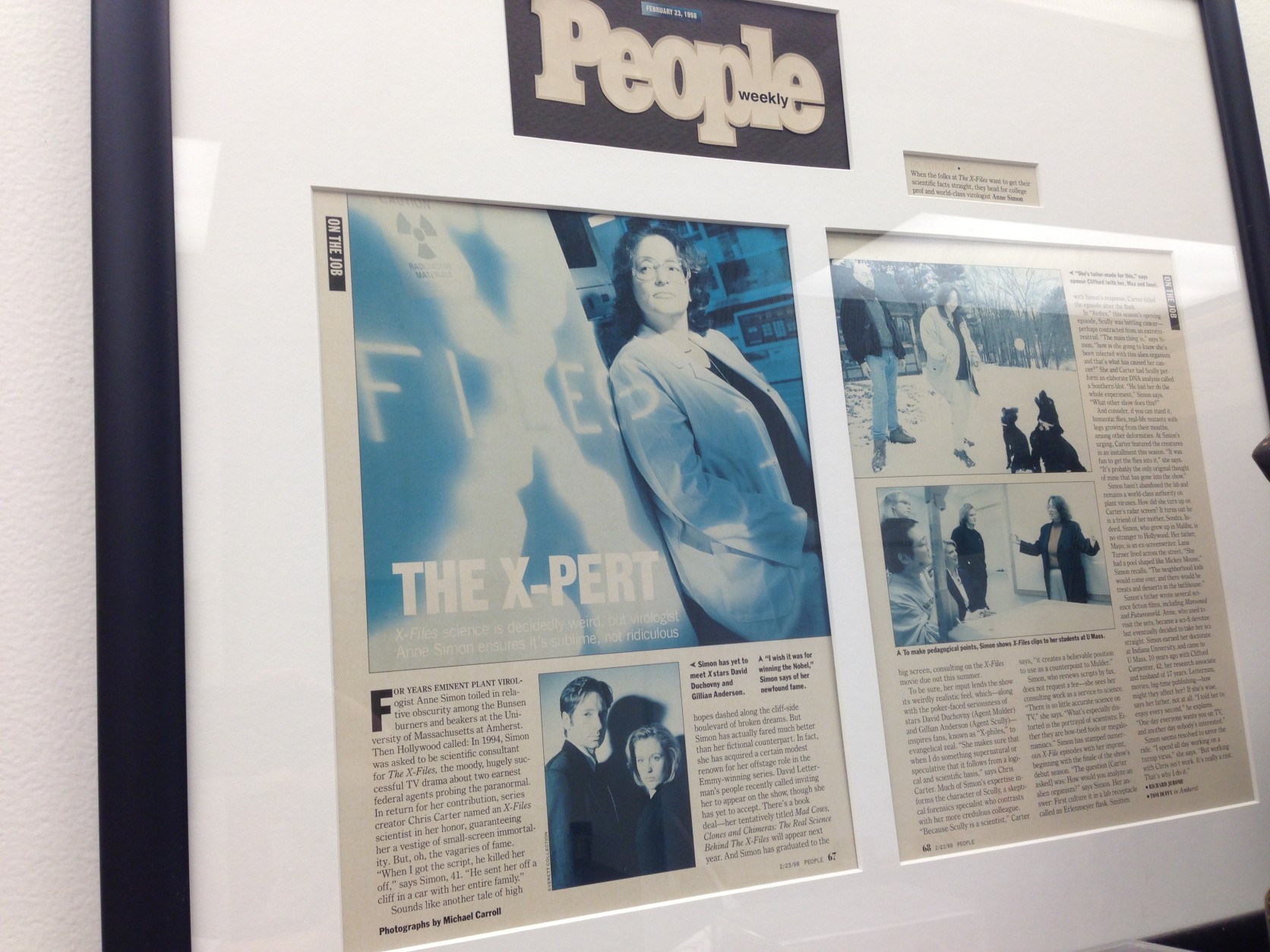
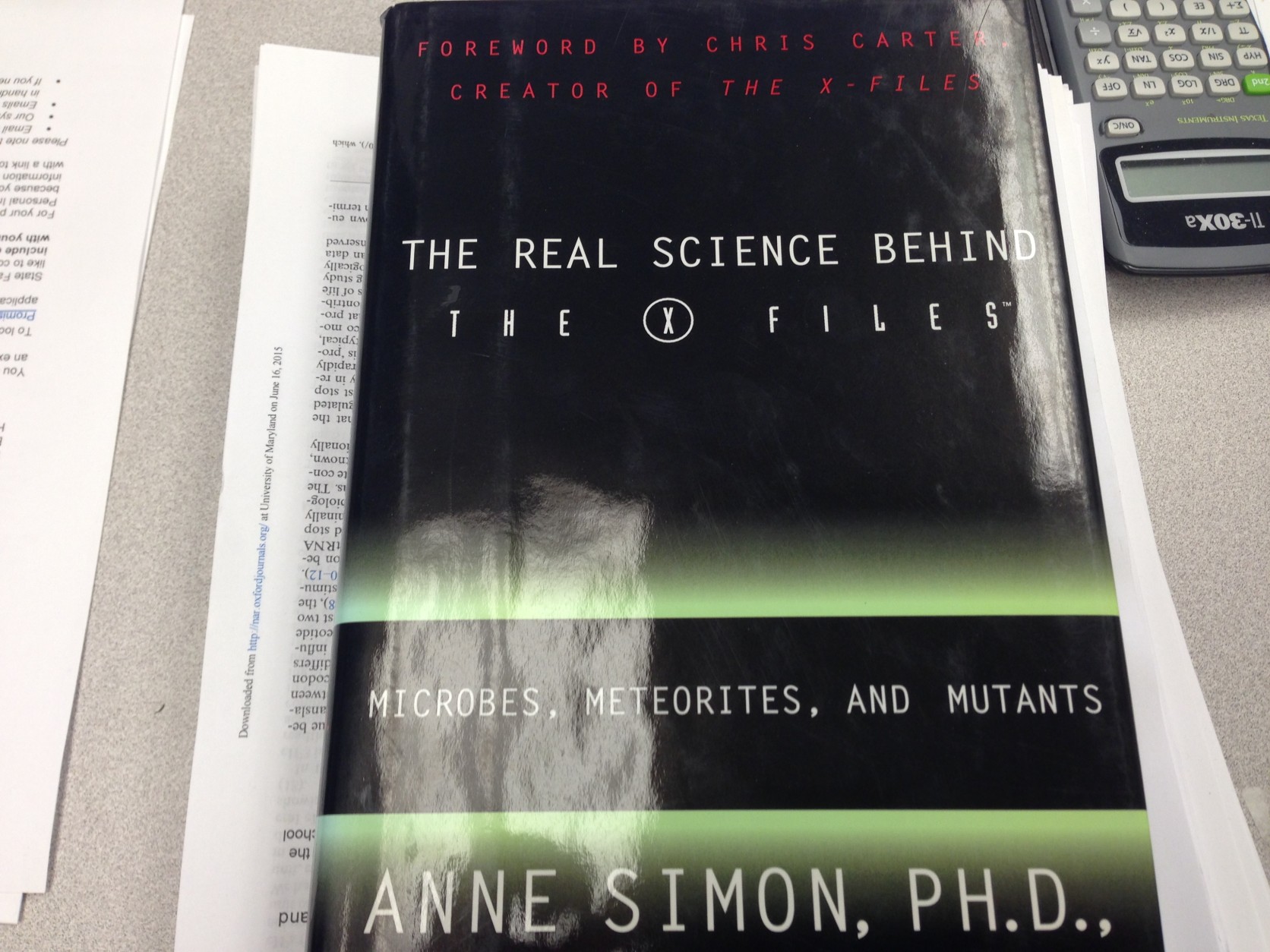
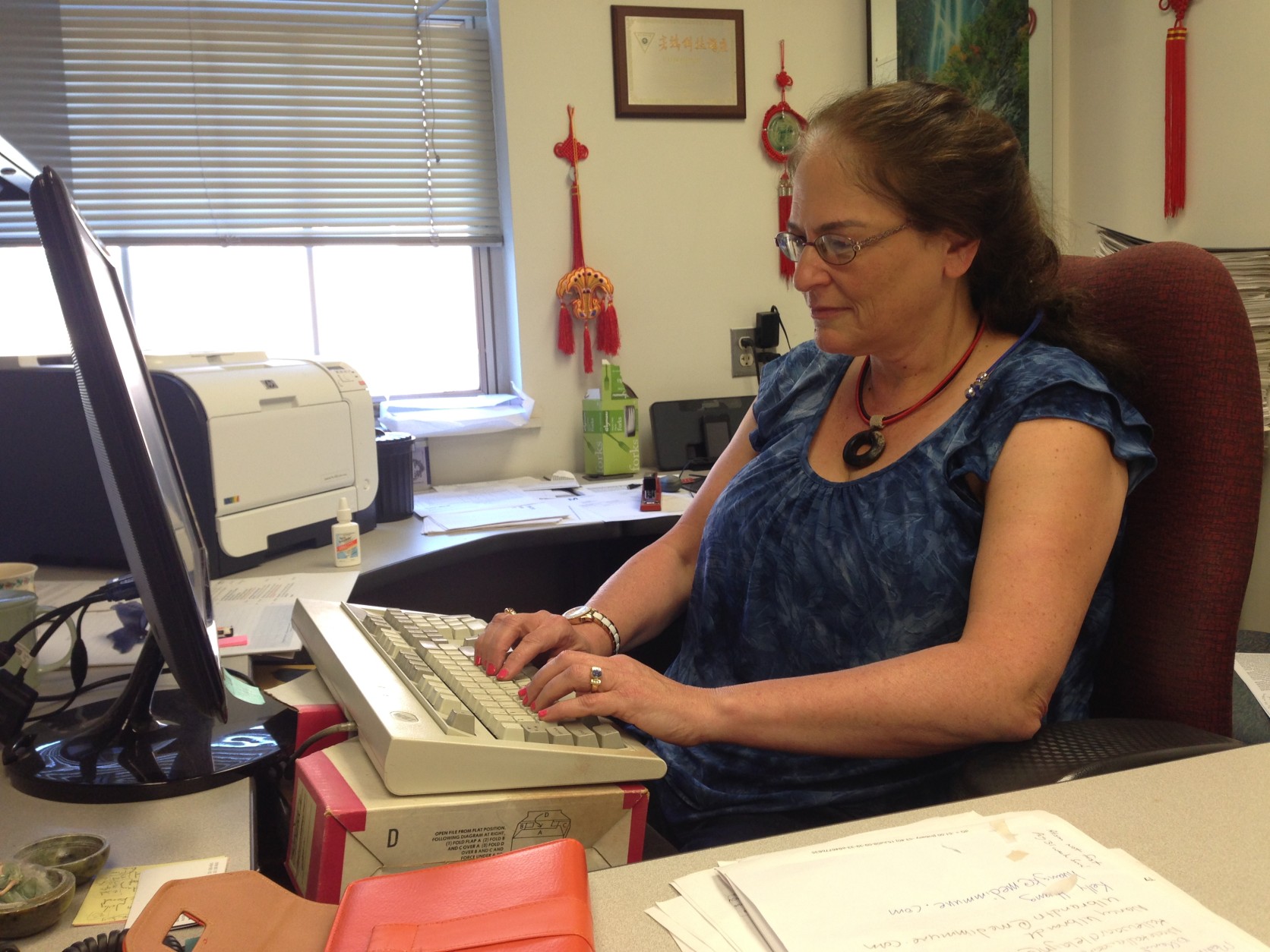
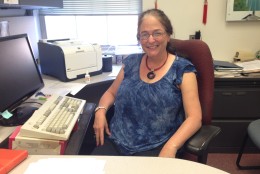
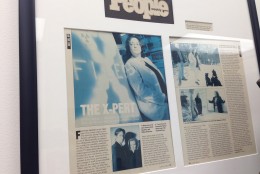
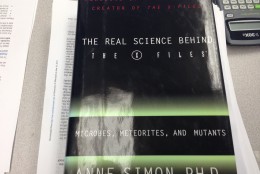
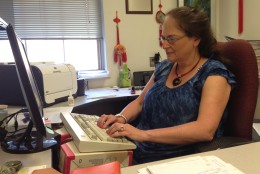
WASHINGTON — Fox Mulder and Dana Scully are teaming up again as “The X-Files” prepares to debut new television episodes in January 2016, and a local professor who has been a science adviser to the show since the series began in the 1990s tells WTOP that much of the science in this science-fiction show is actually true.
“I think when the science is real, it comes across as real,” Anne Simon says. “… I think it’s always best when we hear the truth.”
Simon has worked in the University of Maryland’s Department of Cell Biology and Molecular Genetics for 15 years. She’s a plant virologist and the author of the book The Real Science Behind the X-Files: Microbes, Meteorites and Mutants.
“It’s always interesting how scientists get interested in science,” she says. “Some probably have parents who were scientists, but that wasn’t me.” An eighth-grade teacher introduced Simon to the Museum of Natural History in Los Angeles where she put together dinosaur bones and “I decided I loved it.”
“The X-Files” debuted in 1993, while Simon was teaching biology and researching viruses at the University of Massachusetts. The drama revolved around two FBI agents who investigated unexplained, paranormal events. It ran for nine seasons, ending in 2002; Fox recently announced they would be reviving the show for six new episodes starting next January.
Shortly after seeing the show’s very first episodes, Simon realized the show’s creator was a family friend, Chris Carter. She says, “Chris loves science. He is a real science fanatic and he wants the science to be correct. But he doesn’t have a formal science background.”
When the opportunity arose for her to join the show as a biology adviser, she was thrilled: “I loved the character of Dana Scully. She was a scientist. She was being realistically portrayed. She was gorgeous. She didn’t know everything about everything. She knew medical science and infectious diseases. She was a skeptic. She was a terrific role model for women and for young scientists.”
Simon asked her University of Massachusetts students whether the show had influenced their decision to go into the sciences. “Half of the hands in the class went up. Yes; I think positive portrayal of science in movies and on television is very helpful to get students to understand they could have a career like this. Really, we’re here to search for the truth. I can’t think of a more fun job to have. It’s discovering things that no one has even thought of before. And figuring out if it’s true. And teaching young people to love science.”
What looks like an alien?
The first episode Simon helped with was “The Erlenmeyer Flask,” the first-season finale, in 1994. She says Carter wanted to know how a scientist would study a strange micro-organism.
Her explanation of the 10-year process, though accurate, wouldn’t fit within the constraints of a 45-minute show, so they discussed microscopes and genetic sequencing. Since the micro-organism was supposed to be alien, Simon suggested using pollen for a visual representation. “Pollen just looks wonderful — lots of spikes and a lot of little craters,” she says. “He thought that was a great idea. He ended up using a picture from a magazine on pollen allergies. That was actually used on the show.”
When Carter wanted to know how a scientist could tell whether an organism was alien, Simon thought, “What does every cell on the planet — all of our cells, bacterial cells — what do we all share? I had to think of one of these things and make it different. We talked about DNA; all of the DNA on the planet has the same four constituents. So for this alien, we made it six. That would instantly tell you it was not of this planet.”
And what would a scientist do if he or she found an alien virus? “I’d call the authorities! I’d call the government! This all ended up in the show.”
When Carter asked Simon to come up with a living organism that looked alien, she knew exactly what to use – a sea urchin pluteus. “It looks very unusual. It’s translucent and it pulses. It has these interesting projections and I didn’t think anyone would recognize it.”
Her ideas have caused some controversy, however — in an effort to preserve much of the true science but allow for dramatic structure, many of the scenes are exaggerated.
Simon was presented with a dilemma: Scully must figure out whether she was infected by an alien virus. Simon suggested Scully perform a DNA detection method called the Southern Blot, which takes about three days. But Scully only had three hours. With Simon’s help, the script portrayed Scully carrying out the test correctly, step-by-step. “The only thing that isn’t real is that she did it very quickly. Well, for years after that, when I was giving talks at universities, I was asked by students for Scully’s protocol for doing this Southern Blot in three hours. People were writing on the Internet that this was the least-accurate thing on the entire show! Scientists were having a field day with it. Everything else was correct about the experiment except the time.”
Carter even named a scientist character – Anne Carpenter — after Simon. “When I’m reading the script, I find that he kills me off and my entire family for telling the truth. It’s actually very dangerous to be a scientist on The X-Files! A lot of them ended up paying the ultimate price for trying to discover the truth,” she laughs.
Though the series is science fiction, Simon says many of the investigations are not so out-of-this-world. “What are the scientists doing? What are the experiments they are doing? What is the language they are using? Carter tries to make that as real as possible.”
The truth is, real science is the underpinning of many of the episodes. And real life can be just as scary as science fiction.
“We’re always worried about infectious agents – especially viruses,” she says. “There are a lot of viruses that we don’t know about that are still hidden. They’re hidden in animals that are located in very remote regions and that are just now coming in contact with humans. The opportunity for viruses in one species to actually infect another species is real and it happens.”
She says the worst recent example of that was the flu pandemic of 1918. Between 20 million and 40 million people died when soldiers fighting in Europe during World War I came home with the virus. “Just about everybody in the country caught the flu at that time. Some people went blind; some people went deaf.”
Simon won’t share any spoilers, but says these new episodes will leave fans satisfied. “People who watched and loved the earlier episodes of ‘The X-Files’ will find that these six episodes are really following what happened before and will answer a lot of questions. I’ve read one script and it was a real page-turner. I thought it was terrific and I am so excited. I can’t wait to see the next five scripts.”







